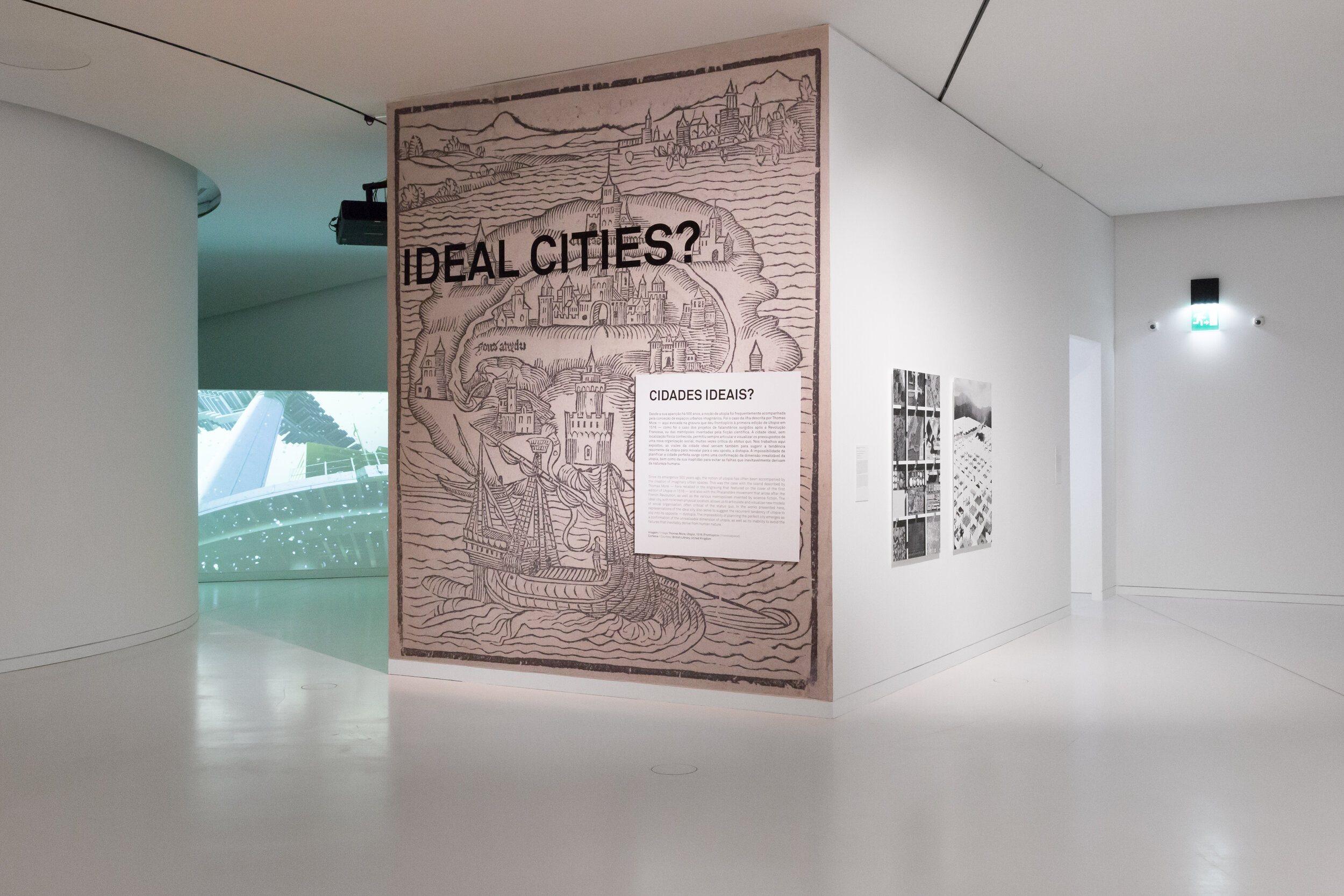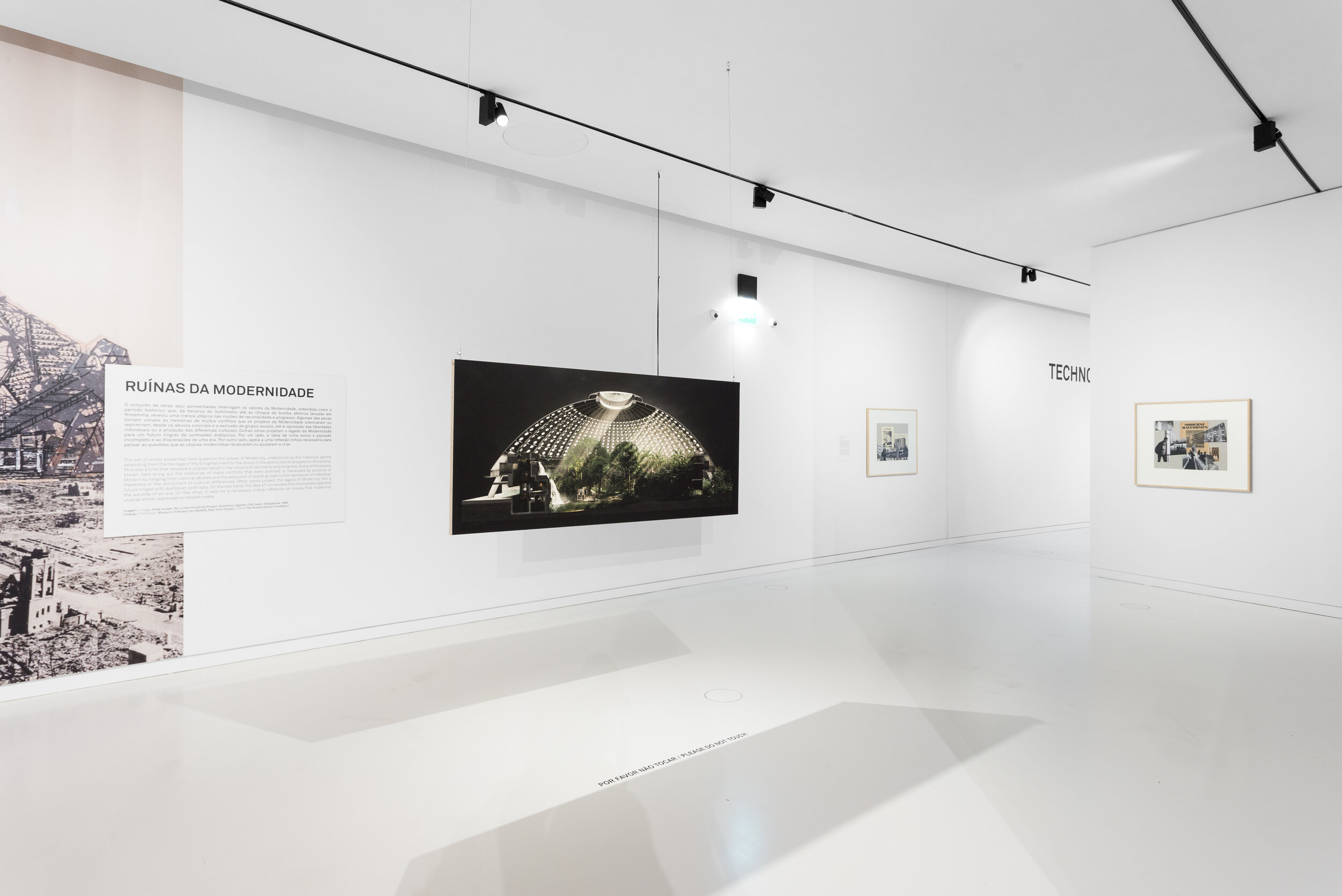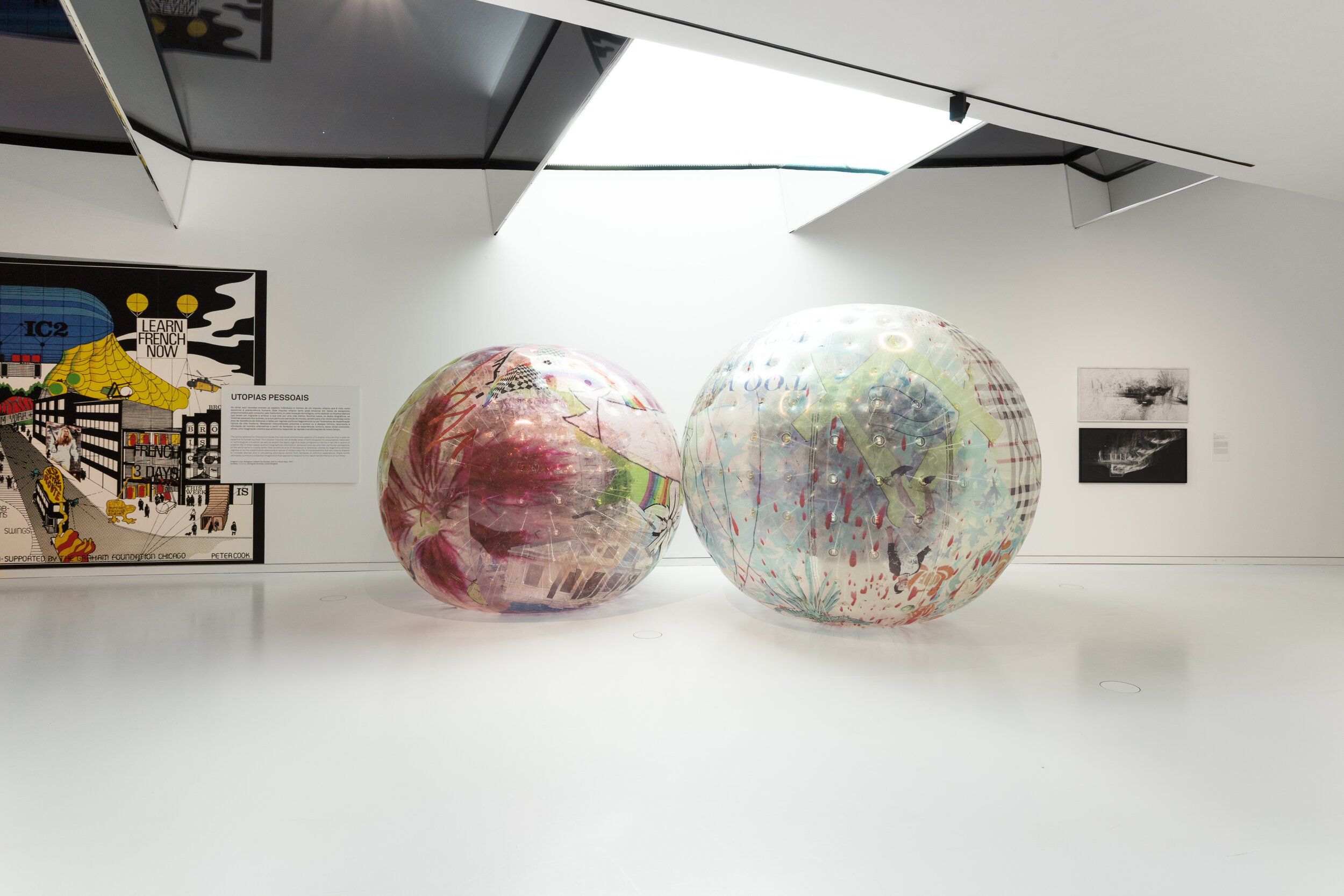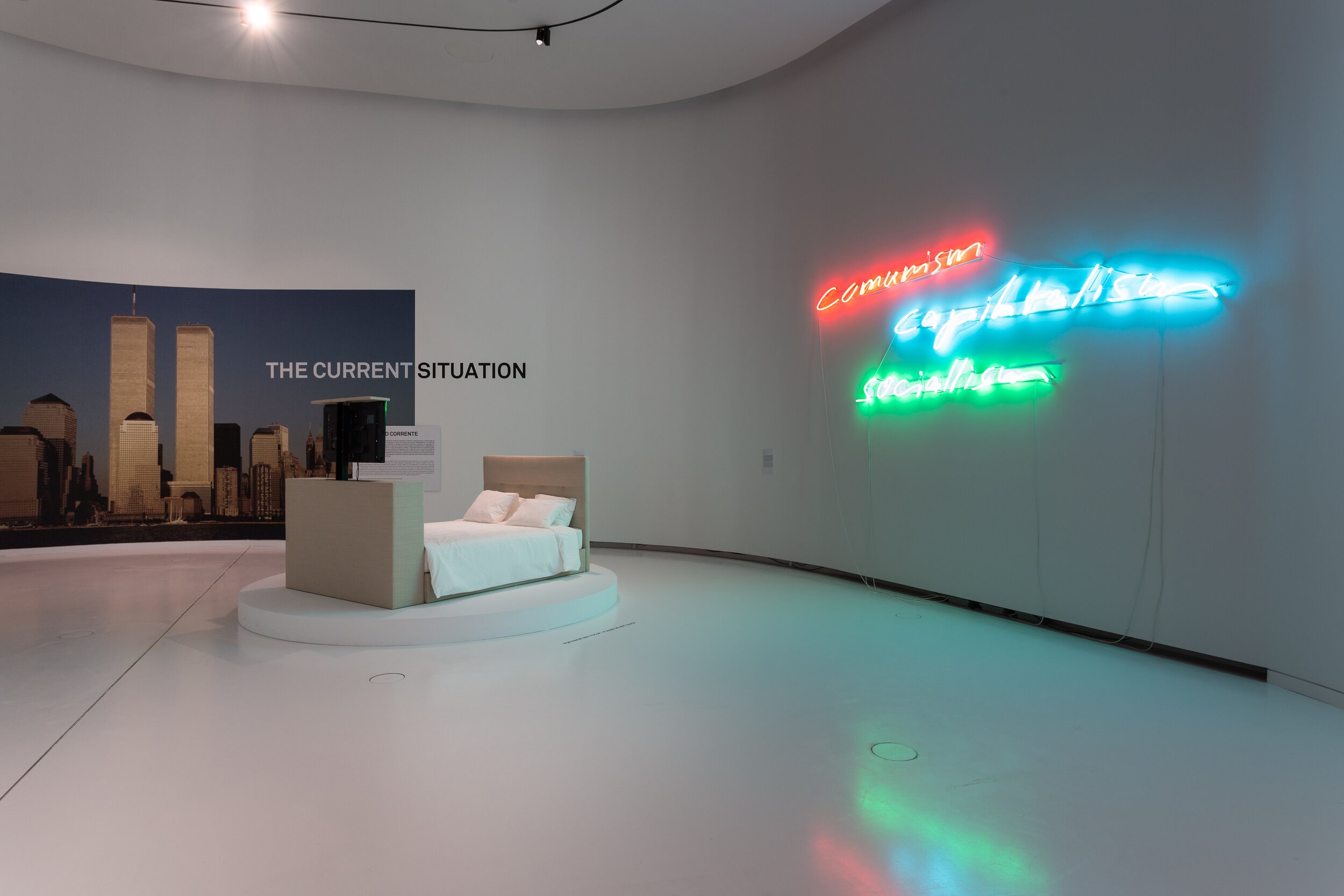
Utopia/Dystopia. A Paradigm Shift in Art and Architecture
Sed vitae enim egestas, congue arcu et, efficitur augue. Cras sit amet venenatis est. Sed pulvinar sodales lacus sit amet placerat. Nulla facilisi. Integer pellentesque semper magna vel pellentesque. Cras imperdiet tortor sit amet erat aliquet rutrum.

Utopia/Dystopia: A Paradigm Shift in Art and Architecture was an exhibition at the Museum for Art and Architecture in Lisbon (MAAT), curated by me, Pedro Gadanho, and João Laia, featuring works by artists and architects (Aldo Rossi, Yona Friedman, Jordi Colomer, Jonas Staal, Tacita Dean, Office with Dogma, Kader Attia, DIS, James Beckett, among many others).
Image credits: Still from The Sky Exists (COMMISSIONED artwork) Diogo Evangelista, 2017. Photo: Bruno Lopes. Courtesy of EDP Foundation/MAAT.
Utopia/Dystopia. A Paradigm Shift in Art and Architecture was the first “manifesto exhibition” at MAAT’s new building, presenting side by side works of artists and architects who, in their respective fields, have produced insights and critical reflections on crucial themes of our times.
Echoing the 500th anniversary of Thomas More’s Utopia, the show revealed how the dichotomy between utopia and dystopia reflects a time of paradoxical acceleration, where anxiety and optimism collide.
Today, technological developments stimulate expectations of enhanced connectivity and a better quality of life. However, cyclical crises also constantly disturb the social, political and ecological spheres. With utopian and dystopian narratives typically emerging in such troubled periods, artists and architects, writers or filmmakers are crucial in proposing contradictions and proposing illuminating new possibilities. Encompassing a wide range of ideas, from a profound reflexion on the downfall of Modernism to the current political scene, Utopia/Dystopia promoted a dialogue between more than 60 artworks and projects that present unique views on the subject since the early 1970s.

Exhibition view. Photo: Bruno Lopes. Courtesy of EDP Foundation/MAAT.
The exhibition was divided into five sections, opening with Ideal Cities?. Since its emergence 500 years ago, the notion of utopia has often been accompanied by the conception of imaginary urban spaces. This was the case with the island described by Thomas More - recalled in the engraving that featured on the cover of the first edition of Utopia in 1516 - and also with the Phalanstère movement that arose after the French Revolution and of the various metropolises invented by science fiction. The ideal city, with no known physical location, allows us to articulate and visualise new models of social organisation, often critical of the status quo. In the works presented in this section, representations of the ideal city also served to suggest the recurrent tendency of utopia to slip into its opposite - dystopia. The impossibility of planning the perfect city emerged as a confirmation of the unrealisable dimension of utopia, as well as an inability to avoid the failures that inevitably derive from human nature.

Exhibition view. Photo: Bruno Lopes. Courtesy of EDP Foundation/MAAT.
The second section, under the title Ruins of Modernity, questioned the values of Modernity, understood as the historical period extending from the heritage of the Enlightenment to the shock of the atomic bomb dropped on Hiroshima, which revealed a utopian belief in the notions of rationality and progress. Some of the pieces exhibited brought out the memories of many conflicts that were silenced or repressed by projects of modernity, ranging from colonial abuses and the exclusion of social groups to the repression of individual freedoms or the annulment of cultural differences. Other works projected the legacy of modernity into a future tinged with dystopian contrasts. On the one hand, the idea of ruin evoked the incomplete past and the wounds of an era. On the other, it called for a necessary critical reflection on issues that modernist utopias either championed or repressed.

Exhibition view. Photo: Bruno Lopes. Courtesy of EDP Foundation/MAAT.
The third section explored Technological Dreams. Technology tends to be seen as a miracle solution for any obstacle in the path of human evolution. History is littered with examples of enthusiastic reception of technological advances that are shortly followed by disenchantment with their immediate consequences. At the beginning of the 20th century, the Futurists applauded the renewal of a society sustained by the power of machines and new scientific advances - ideas that were questioned in the wake of the First World War. Industrial and technological progress after the Second World War gave rise to an optimistic view of technological progress – a view that the 1973 oil crisis soon replaced with a scepticism as to the models of development pursued by our societies. In a similar way, the arrival of information technologies and new technical possibilities at the end of the 20th century contrasts with a potential erosion of social equilibrium, both in the sphere of the private individual and in the public and urban realm.

Exhibition view. Photo: Bruno Lopes. Courtesy of EDP Foundation/MAAT.
The works selected for the fourth section - Personal Utopias - evoked the individual and intimate aspects of a utopian impulse that is seen as essential to human survival. This utopian impulse can embody ideas of both escapism in consumption, hedonism or technological innovation, as well as explain the basic urge that leads a migrant to risk his or her life in search of opportunity. In other cases, authors’ biographical information, personal histories and their particular perceptions of the world serve to create works that constitute acts of resistance to dystopias created by hegemonic political regimes or by the mainstream phenomena typical of modern day life. In interpretations that are close to dreams or intimate desires and simulating alternative worlds from fantasies or common experiences, the works gathered here ultimately summon a collective imagination that aspires to respond to the rapid transformations of our times.

Exhibition view. Photo: Bruno Lopes. Courtesy of EDP Foundation/MAAT.
The works presented in the last section - The Current Situation - echoed contemporary imbalances, calling attention to the substitution of the utopian tradition by the intrusion of dystopic traits in everyday life. New populisms destabilise the political systems that have underpinned Western democracy. The dominant economic model, based on the exhaustion of resources, polluting industries and the logic of consumption, have caused an environmental emergency. Social inequalities are accentuated by phenomena such as the 2008 financial crisis. The rise of terrorism has led to military escalations and the displacement of thousands of refugees. As the idea of crisis contaminates all aspects of society, the contributions of artists and architects assume a renewed political character. Giving visibility to the connections that govern our planet and raising awareness of development models that are more sustainable, the displayed works challenged the acceptance of dystopia and at times proposed new forms of utopia that are achievable through everyday action.

Exhibition view featuring Wolfgand Tillmans’s Lights (Body), 2002. Photo: Bruno Lopes. Courtesy of EDP Foundation/MAAT.